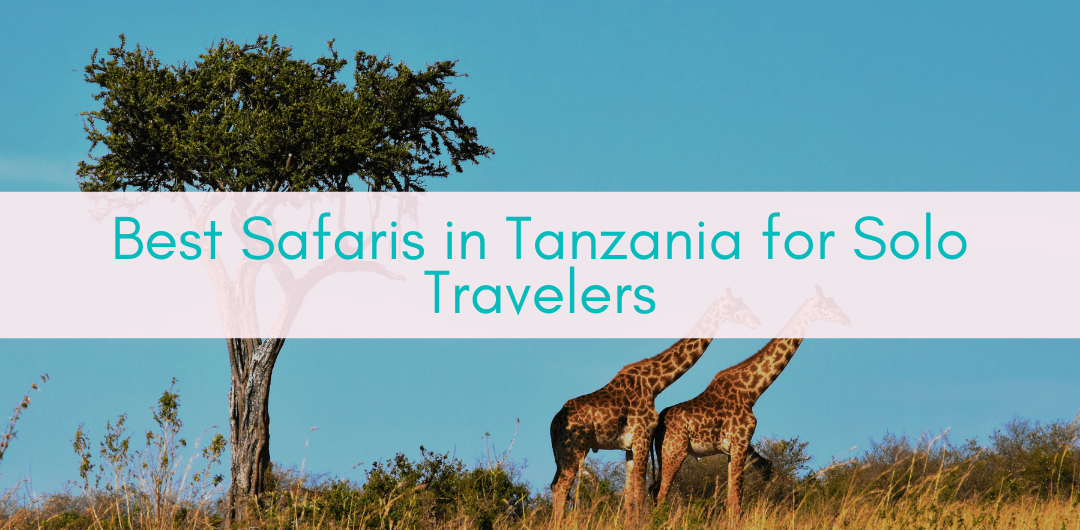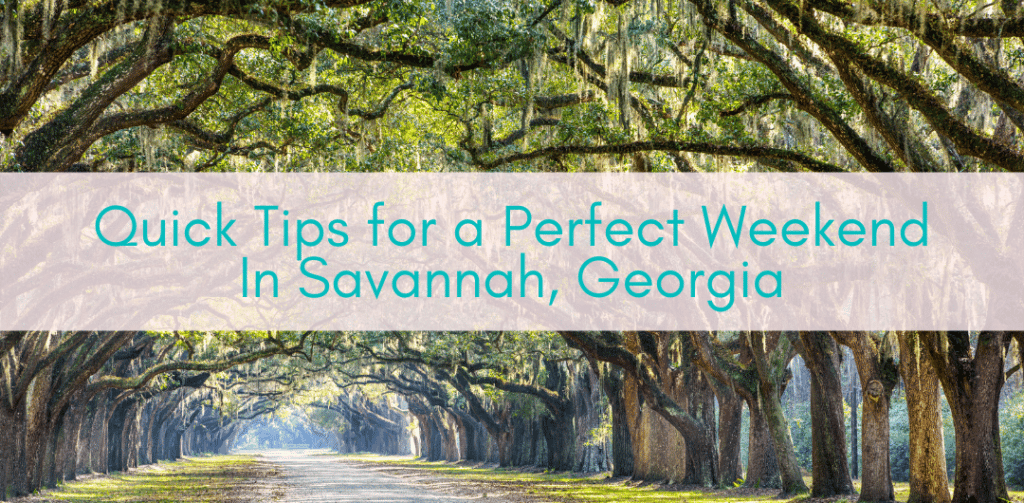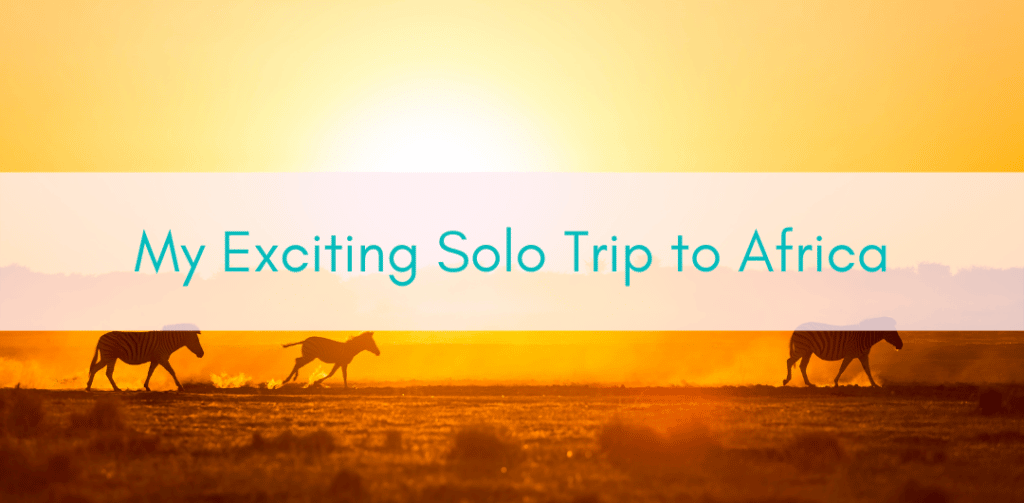Looking for the best safaris in Tanzania for solo travelers? You’ve come to the right place. Tanzania is arguably one of the best places to go on safari in the world. It’s home to the famous Serengeti national park, a sprawling ecosystem that is the stage to the largest terrestrial mammal migration on the planet – the great wildebeest migration. Organizing your dream safari can no doubt be overwhelming, with everything from itineraries to safety to consider, but it can be even more challenging when you’re visiting as a solo traveler. In this guide I aim to tell you everything you need to know about going on safari in Tanzania as a solo traveler, so you can have the best experience possible.
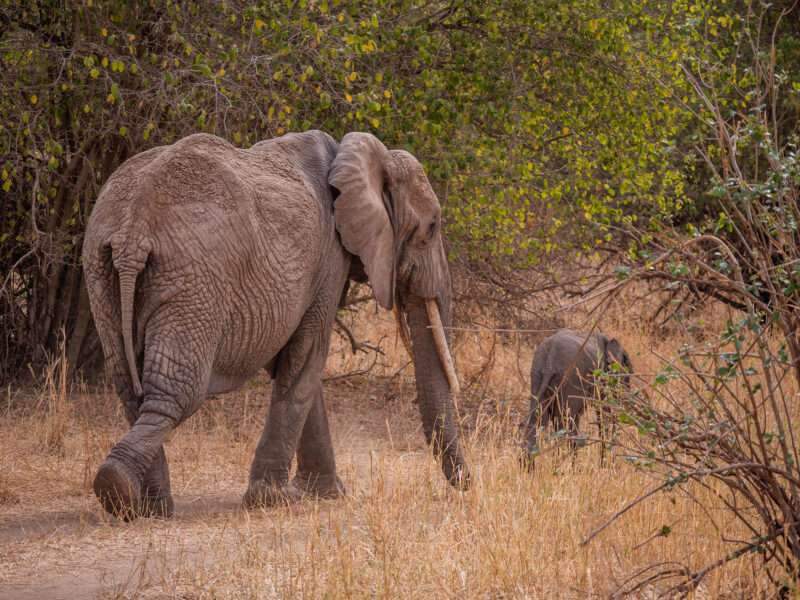
Is it Safe to go on Safari in Tanzania as a Solo Traveler?
Africa as a whole is often feared by many travelers. The news bombards us with tales of extreme weather such as droughts, civil wars and much more. However, it’s important to remember that Africa is a huge continent, and each country has a different level of risk. The news also loves to give us the worst of everything, neglecting to inform us about all the wonderful things that happen across Africa each day. Tanzania itself is a large country and the north, where most safaris take place, is considered safe.
Most safaris are organized through a tour operator which means that you have an experienced driver guide with you for the duration of your safari. This is extremely reassuring, especially for solo travelers as you are never completely alone and are instead in the company of someone who knows the roads well as well as local customs and animal behaviors, making the likelihood of ‘sketchy’ scenarios (such as being in the presence of an angry elephant or feeling overwhelmed by hawkers) go down dramatically.
The main areas to be diligent are in large towns or cities (such as Arusha) as petty crimes can occur. This advice however is not limited to Tanzania, and I’d advise this for any city in the world. So, all in all, I believe Tanzania is a fantastic safari destination for a solo traveler.
Which are the Best Safaris In Tanzania for Solo Travelers?
There are a number of different safari options available, including self-drive safaris, group safaris and private safaris.
Group tours definitely provide the best options for solo travelers, as they allow you to meet and interact with other travelers, and are also far more cost-effective than private tours. Each safari vehicle can seat up to 7 travelers.
Private tours are certainly an option but they are considerably more expensive than group tours, especially for solo travelers as the costs of the vehicle and driver guide fall exclusively on you. If you like socializing as well, it can get a little quiet being the only traveler in your vehicle.
I wouldn’t recommend self-drive safaris in Tanzania unless you are very seasoned at driving through Africa. Regulations for entering the parks are strict (just a 4×4 won’t cut it, you need a Land Cruiser or similar) and road conditions aren’t great so breakdowns are likely.
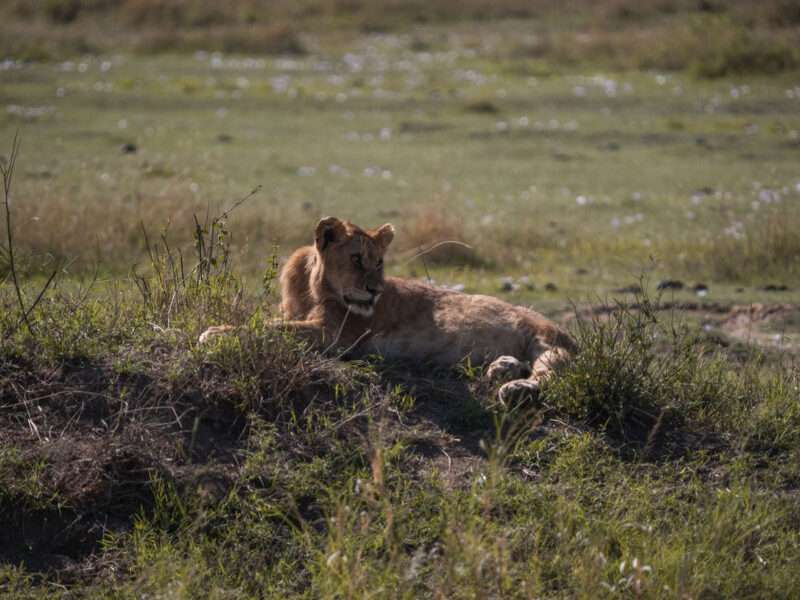
How Much Do Tanzania Safaris Cost for Solo Travelers?
Costs of Tanzanian safaris vary between parks, time of year, the various lodges and tour operators and the levels of comfort and luxuries that they each provide.
If you book through a Tanzanian safari company, you can expect to pay around $300 per person per day for an economy safari, $400 for midrange and up to $650 for a super luxury experience. Booking through an overseas travel agent can be significantly higher.
Solo travelers however, are also faced with an added single supplement cost of around 30-50% that is charged by most safari lodges. This makes careful research and planning an absolute necessity for any solo traveler to Tanzania or anywhere else in the world for that matter.
This is why group safaris are so much more economical as you won’t be classed as a solo traveler.
When is the Best Time to Go on Safari in Tanzania?
Broadly speaking, the best time to go on safari in Tanzania would be during the long dry season (between June and October), when the vegetation is low and the animals are easier to spot. During that time, they also tend to congregate around rivers and watering holes
January and February are regarded as the short dry season which is also the time for raising families in the southern region of the Serengeti. That means many animal babies and loads of big cat activity, although the lush vegetation may hinder game viewing slightly. For birders, this is a good period as many migratory birds from the northern hemisphere have arrived to escape the harsh European winters. Parks are generally less busy and prices much lower during this time too.
During March, April and May, the country experiences its wettest period, commonly known as the “long rains”. It is however the time for birds to start their courtship rituals and the northern hemisphere migrants are still around, making it the best period for bird lovers and photographers.
June and July are the driest months, which is great for animal viewing but the parks are at their busiest and most costly. September is a great month for safaris and it is also when the “Great Migration” is in full swing in the northern regions of the Serengeti, particularly at the Mara River crossing. It is also a good time to hike Mount Meru and Kilimanjaro.
So basically, depending on what you’re actually wanting to do or see, Tanzania is an all year-round destination, with each month having something different to offer to everyone.
What is the Best Length of Time to Go on Safari in Tanzania?
This is perhaps the hardest question to answer. With so many parks spread over thousands of square kilometers, each one with its own unique landscape, wildlife and ecosystem, you could spend months in Tanzania and still not get to experience all of its beauty.
Although much will depend on how much you really want to see and do on safari in Tanzania, and how much time or budget you have, there are several places that you simply dare not to miss. The Great Migration in the Serengeti, a game drive through the Ngorongoro Crater, a visit to a Maasai village, or a hike up Mount Kilimanjaro, are all experiences that will stay with you forever. There is however, so much more to see and do in Tanzania
For the average wildlife and nature lover, a safari of between 7 and 10 days should be quite sufficient to cover most of Tanzania’s main attractions.
Best Safaris in Tanzania for Solo Travelers
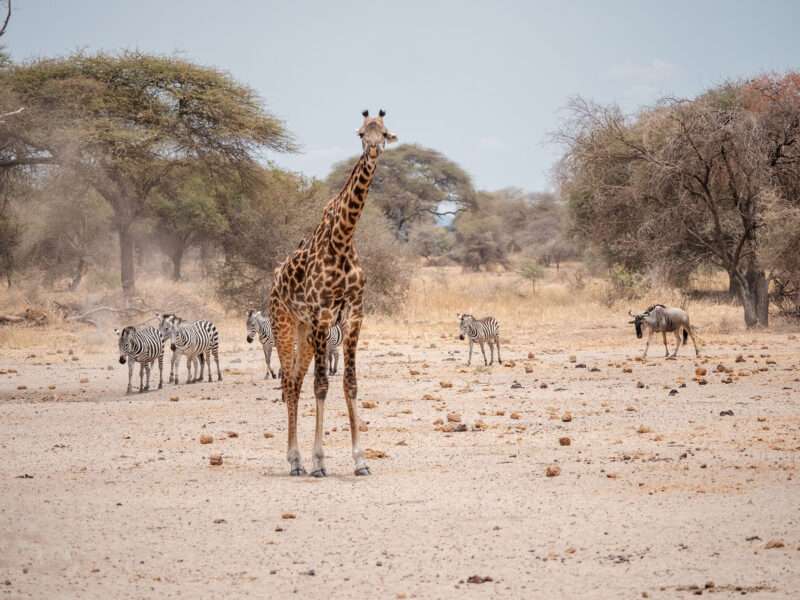
- Serengeti National Park
Whether you’re going solo, as a couple or as a family, the Serengeti National Park must be the ultimate choice for all nature and wildlife lovers. If you had to choose only one game park to visit in your entire life, the Serengeti would be it – end of discussion.
The Serengeti National Park is spread over nearly 15 000 square kilometers and is home to pretty much every popular animal species found on the African continent. Over 4000 lions, 1000 leopards, 500 cheetahs, an abundance of elephants, rhinos, buffalos, hippos, crocs, zebras giraffes, wildebeest, warthogs and countless gazelle species roam freely within this fenceless pristine wilderness. And the variety of birdlife is equally impressive.
And then of course, if you visit at the right time, you can witness the greatest animal migration on our planet, also known as the Greatest Show on Earth! In search of green grass, close to two million animals, mainly wildebeest, zebras and various buck species, embark on a perilous 1000 mile journey across the Serengeti, while being hunted and ambushed by big cats, hyenas and crocs along the way.
The best time to witness this spectacle is during the dry season between June and October in the northern regions of the park, particularly at the Mara River crossing where there is absolute pandemonium. Virtually all lodges and tour operators include ring side seat viewing points along the Mara River banks in their safari itineraries during this period. You really don’t want to miss this spectacle!
- Ngorongoro Crater
Once you enter this unique landscape with its very own ecosystem, you’ll soon realize why Ngorongoro Crater is regarded as the Eden of Africa and considered by some to be a wonder of the natural world.
Formed millions of years ago when the volcano collapsed on itself, the crater spans 19 kms across with the rim offering panoramic views across the 260 km² crater floor spread out 610 meters below – a truly magnificent sight. It’s hard to imagine how such beauty can result from such violent and destructive forces of nature.
With approximately 25,000 animals in this relatively small area, a game drive may provide you a wonderful opportunity to view many species, including lions, leopards, cheetahs, elephants, hippos, buffalos, zebras, hyenas, wildebeest, the endangered black rhinos and tons of antelope species. The only species you’ll not see in the crater are giraffes and crocs. For birders, it’s packed with a wide variety of birds, including massive flocks of pretty flamingos which hang out around Lake Magadi on the crater floor.
As no migration takes place within the crater, superb game viewing is possible all year round. The dry season is probably the best time to visit but it is also the busiest time too.
- Tarangire National Park
Situated just over two hours’ drive southwest of Arusha is another gem among all of Tanzania’s game parks. Named after the river that bisects almost the entire area, Tarangire National Park is home to a vast range of Africa’s wildlife, including all the big cats, although they are not always spotted. The main stars however, are its huge herds of elephants, some up to 300 strong. Witnessing these giants moving through the forests in such numbers is not something you see too often in Africa.
Among the other game that inhabit Tarangire are large herds of wildebeest, zebras, giraffes, buffalos, as well as many antelope species, including the largest of them all, the elands. There are also over 500 species of birds here from enormous and flightless ostriches to the tiny and exquisite yellow-collared lovebirds.
Being somewhat drier than the Serengeti up north, Tarangire has certain different topographical features, the most distinct being the abundance of giant baobab trees. This ancient species has adapted to drier climates by being able to store hundreds of litres of water within its system, sustaining itself for prolonged periods of drought. Their bizarre shape has earned them the nickname of upside down trees by locals in certain regions of Africa.
As with most Tanzanian game parks, the best time to visit Tarangire is during the dry months when game tend to congregate along the river banks, making the animals easier to spot.
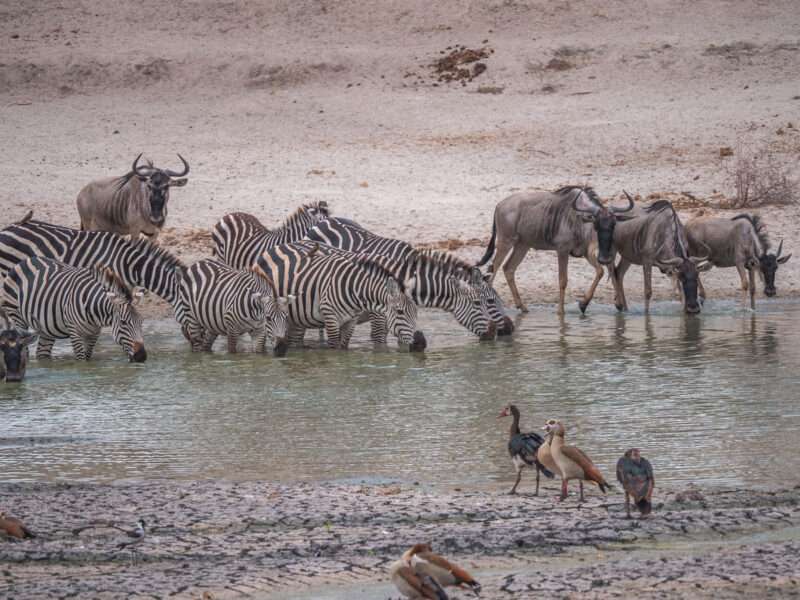
- Lake Manyara National Park
Sandwiched between Ngorongoro Crater and Tarangire National Park, this national park has an added attraction in that two thirds of its 330 km² area is taken up by the massive spring-fed Lake Manyara.
The landscape around the lake consists of grassy floodplains and evergreen forests, which are home to a wide variety of game, including elephants, buffalos, hippos, giraffes, zebras, baboons, wildebeest, impalas and waterbuck. It is also well known for being home to one of only a handful of tree-climbing lion populations in the world. The other prominent one is in nearby Uganda. This fact alone is the main reason why so many wildlife enthusiasts, photographers and filmmakers come to this national park.
Apart from viewing the wildlife in traditional game drives, one may also embark on a canoeing safari, paddling around the shallow waters of the lake, allowing you to get close to many animals as they congregate along its shoreline. The lake also attracts over 400 bird species, including huge flocks of pelicans, waterfowl and the elegant flamingos. A guide will accompany you on the water, ensuring you both keep a safe distance from any hippos that may be wallowing in the shallows.
Walking safaris and Maasai cultural tours can also be arranged at Lake Manyara National Park.
- Arusha National Park
Conveniently situated just 25 kilometres from the city of Arusha, this national park is a popular destination for more reasons other than for just its wildlife. Spanning across an area of only 137 km², the landscape consists of savannah, rainforest, lakes, waterfalls and volcanos, and is teeming with an abundance of wildlife. It is also surrounded by absolutely stunning scenery in every direction, including views of the majestic Mount Kilimanjaro some 70 kms in the distance.
Rising to 4,566 metres above sea level, Mount Meru is situated within the park and is the second highest peak in Tanzania. It offers great hiking for adventurous travelers, while the Tululusia Waterfall provides a short and more sedentary amble for those who prefer viewing wildlife and beautiful scenery.
Common animals you’re likely to encounter in the park include buffalos, giraffes, zebras, warthogs, colobus monkeys and various herbivores, as well as over 400 species of birds.
You could view the wildlife by taking a guided game drive or drive on your own, if you have a 4×4 vehicle with a high clearance. The absence of predators also makes Arusha National Park ideal for a guided walking safari, a multi-day climb up Mount Meru and to canoe in the shallow waters of the Momella lakes on the north eastern corner of the park.
–
In my opinion Tanzania is a fantastic safari destination for solo travelers. There are ample group safaris available for you to join, some spanning for 3 days and others a week like this seven day safari from Viator. There are a number of different itineraries available too, meaning the options are bountiful. If you have the budget and enjoy your own company, a private safari provides the ultimate flexibility to travel through Tanzania and see its sights at your own pace.
Home to the Big Five and some beautiful landscapes, the best safaris in Tanzania for solo travelers will no doubt stay with you for the rest of your life.
Looking for more? Check out Are Safaris Ethical?
Her Adventures is an education and empowerment community dedicated to helping women explore beyond their boundaries. We welcome all people who identify as non-masculine/non-male to connect, educate and inspire each other with their stories, fears, knowledge, questions, and ideas. Because together we make each other strong. We hope you will join us and see the world.


